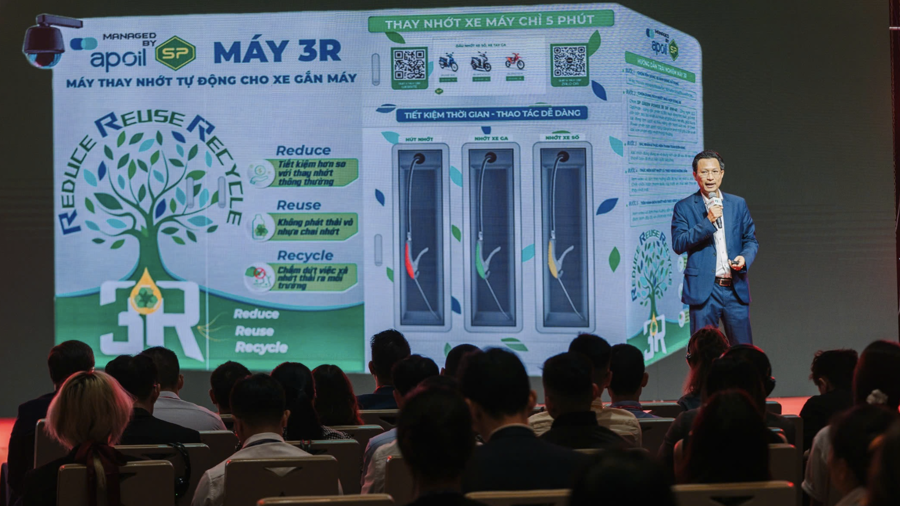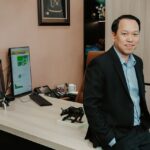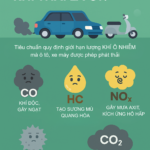Speaking about the urgency of sustainable development at the recent Green Innovation Summit, Ms. Pham Thi Ngoc Thuy, a senior expert on private sector development and director of the Office of Research and Private Economic Development (Department IV), shared that Vietnam has transitioned. If, in the past, the green model was an option, now it is a mandatory condition, necessary and sufficient in global competition.
According to Ms. Thuy, European laws such as the Carbon Border Adjustment Mechanism (CBAM) are rapidly changing and affecting businesses in Vietnam regarding emission control. The first impacted group includes industries such as steel, cement, and aluminum. Many large enterprises in Vietnam are currently struggling to find ways to comply.
In other sectors, such as wood and coffee, Vietnamese businesses are also concerned about the European Union’s anti-deforestation regulations. The US Clean Competition Act will affect more than ten industries in Vietnam that export to the US. Countries like Japan, South Korea, Canada, and the UK are also developing green transition laws, putting pressure on Vietnamese suppliers to transform or be left behind.
A more worrying fact is that many green funds “stop at the border” of Vietnam. They “stop at the border” because Vietnam’s readiness is not high, although we have many opportunities. 64% of Vietnamese companies are unprepared, according to a survey on the “Readiness of Vietnamese Enterprises in Emission Reduction and Green Transition.”
From a business perspective, Ms. Tran Phuong Ngoc Thao, Vice Chairman of the Board of Directors and Head of the ESG Committee of Phu Nhuan Jewelry Company, emphasized that the green and digital transitions have now combined into a “double transition.” This is also a “difficult transition” because a green transition requires a spirit of innovation and must not only maintain the pace of innovation of recent years but also accelerate, break through, solve the problems of the times, and develop sustainably.
Mr. Nguyen Bao Trung, General Director of AP Saigon Petro, shared that the company’s green journey began five years ago by applying technology to reduce 95% of paperwork and manage waste and green energy use. He emphasized that “green must be integrated into all activities.” An example is the new 3R automatic oil change machine, which helps reduce costs, plastic waste, and collect used oil according to regulations, addressing the problem of 100 million liters of oil released into the environment annually.

Mr. Tran Duy Thanh, Director of Air Conditioning, Samsung Electronics, shared that the green transition is not an abstract concept but a practical, daily action. Since 1992, Samsung has committed to reducing emissions. Today, all of Samsung’s sectors have KPIs for their green strategies. For example, from 2022-2030, the mobile phone segment must reduce emissions, use sustainable materials, and enhance technology. The air conditioning segment will reduce carbon emissions, use energy-saving technology, increase artificial intelligence (AI), and use sustainable materials.
Although challenging, Mr. Thanh said that the green transition brings more gains than losses. At Samsung, the green journey has helped enhance its competitive advantage and create a sustainable company. The “loss” is that the cost of the green transition is very expensive. Mr. Trung agreed, stating that the market is very competitive, with price competition, making it difficult to implement the green transition with a certain budget. “Don’t overemphasize short-term revenue from the green transition, as it is an investment in the long-term future. Have a broader vision,” he explained.
Another representative from the technology industry, Mr. Richard Liu, Director of Marketing and Ecosystem Development Partners at Huawei, also introduced the concept of a green transition through practical actions. In its operations, the company adheres to the spirit of energy conservation, technology enhancement, and digitalization. All products must aim for savings and a green transition driven by users rather than just within the company.
While the results are positive, the journey to achieving them is fraught with challenges and obstacles. The biggest challenge for the units is the lack of financial resources and specialized personnel in emission reduction and green transition, in addition to the lack of readiness in technological solutions…
“Enhancing ESG Disclosure: A Key Imperative for Vietnamese Companies to Attract Foreign Investment, Says Maybank Securities’ CEO”
“ESG is more than just a buzzword for businesses seeking to raise capital in the stock market. This was evident in the sharing session by Mr. Kim Thien Quang, CEO of Maybank Investment Bank, who emphasized the importance of Environmental, Social, and Governance factors in attracting investors. Mr. Quang’s insights shed light on the evolving landscape of capital mobilization, where ESG is no longer an option but a necessity for companies aiming to stay competitive and appeal to modern investors.”






































